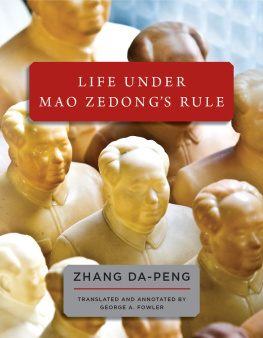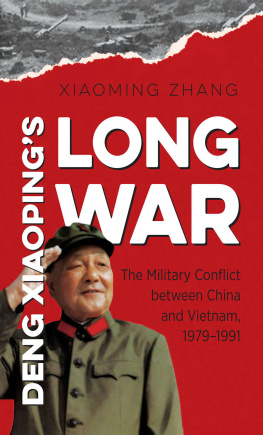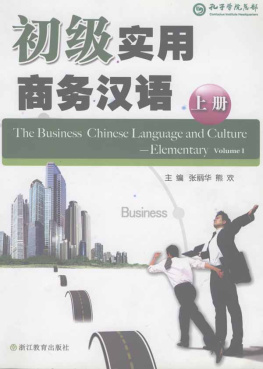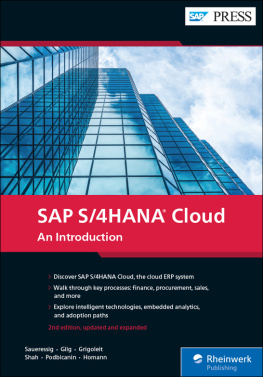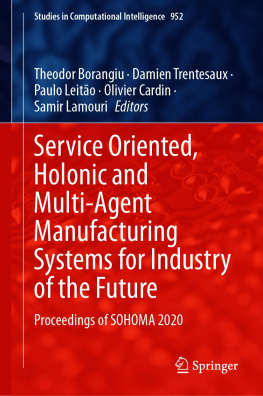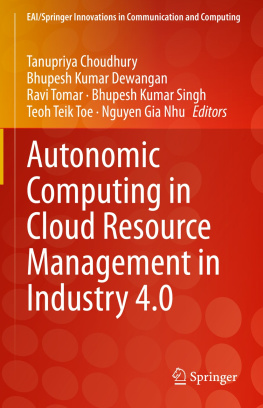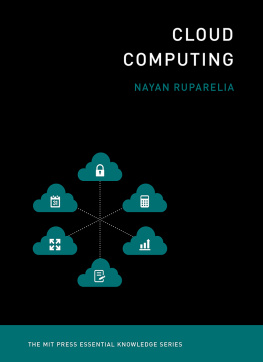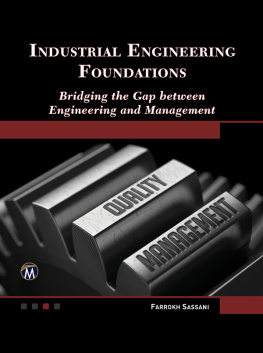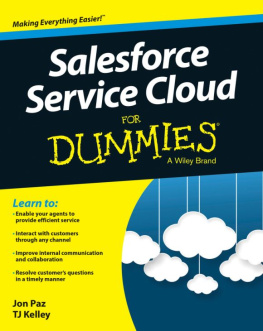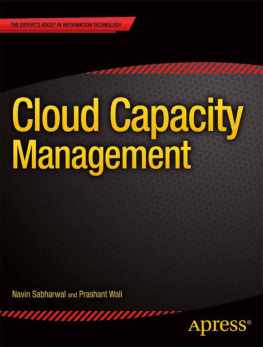Zhang - Service management and scheduling in cloud manufacturing
Here you can read online Zhang - Service management and scheduling in cloud manufacturing full text of the book (entire story) in english for free. Download pdf and epub, get meaning, cover and reviews about this ebook. year: 2022, publisher: De Gruyter, genre: Business. Description of the work, (preface) as well as reviews are available. Best literature library LitArk.com created for fans of good reading and offers a wide selection of genres:
Romance novel
Science fiction
Adventure
Detective
Science
History
Home and family
Prose
Art
Politics
Computer
Non-fiction
Religion
Business
Children
Humor
Choose a favorite category and find really read worthwhile books. Enjoy immersion in the world of imagination, feel the emotions of the characters or learn something new for yourself, make an fascinating discovery.

Service management and scheduling in cloud manufacturing: summary, description and annotation
We offer to read an annotation, description, summary or preface (depends on what the author of the book "Service management and scheduling in cloud manufacturing" wrote himself). If you haven't found the necessary information about the book — write in the comments, we will try to find it.
The book introduces the concept of cloud manufacturing and describes the cloud service technology system behind it. The authors discuss key technologies of manufacturing cloud service management, including service construction, evaluation and composition, and scheduling. With abundant case studies, the book is an essential reference for researchers and engineers in manufacturing and information management.
Zhang: author's other books
Who wrote Service management and scheduling in cloud manufacturing? Find out the surname, the name of the author of the book and a list of all author's works by series.
Service management and scheduling in cloud manufacturing — read online for free the complete book (whole text) full work
Below is the text of the book, divided by pages. System saving the place of the last page read, allows you to conveniently read the book "Service management and scheduling in cloud manufacturing" online for free, without having to search again every time where you left off. Put a bookmark, and you can go to the page where you finished reading at any time.
Font size:
Interval:
Bookmark:
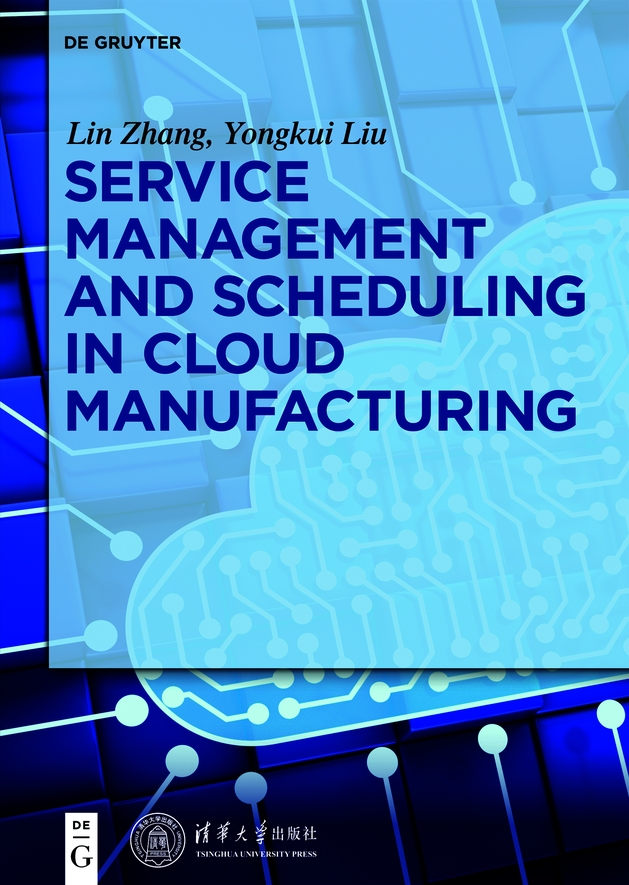
ISBN 9783110469417
e-ISBN (PDF) 9783110471847
e-ISBN (EPUB) 9783110470369
Bibliographic information published by the Deutsche Nationalbibliothek
The Deutsche Nationalbibliothek lists this publication in the Deutsche Nationalbibliografie; detailed bibliographic data are available on the Internet at http://dnb.dnb.de.
2022 Tsinghua University Press and Walter de Gruyter GmbH, Berlin/Boston
This section presents a brief introduction to cloud manufacturing, including its background, definition, technology system, and platform or system architecture.
Introducing the concept of cloud manufacturing was originally driven by the development requirement of Chinas manufacturing industry, motivated by problems with the existing networked manufacturing models, inspired by the new development trends of the manufacturing industry, and enabled by nascent technologies in the early 2000s: (1) Chinas manufacturing industry faced a series of challenges, and it was urgent to address the challenges, (2) existing networked manufacturing models could not effectively address the challenges because there were some problems with them. The further development of Chinas manufacturing industry called for new manufacturing models; (3) new development trends of the manufacturing industry emerged and pointed out new directions for Chinas manufacturing industry; and (4) emerging technologies, cloud computing in particular, provided important enabling technologies and inspirations for introducing the concept of cloud manufacturing.
In the first decade of 2000s, Chinas manufacturing output accounted for over 19.8% of the global output, ranking first in the world []. The added value is close to $120 billion, ranking second in the world. However, compared with manufacturing powers such as the United States, Germany, and Japan, the problem of being big but not strong is still very serious, which is reflected by:
Lack of independent innovation ability. Compared with advanced manufacturing enterprises, most Chinese manufacturing enterprises were at the low end of value chains, lacked original innovation ability, and research and development (R&D) ability. High-end equipment, key parts and components, and materials were heavily dependent on imports. Collaboration and service abilities of Chinas manufacturing industry chains and industrial clusters were at a low level.
Backward production model. The global manufacturing industry was undergoing a transformation from production-oriented manufacturing to production- and service-oriented manufacturing. In European countries, the proportion of manufacturing service in the manufacturing industry was over 20%, and in the United States, the proportion of manufacturing service in the manufacturing industry was as high as 58%. In China, 97.8% of manufacturing enterprises were still in the pure product production and processing stage without any value-added services. Chinese manufacturing needed to change from selling products to selling products and services.
Low resource utilization. A survey in 2010 showed that the utilization rate of production equipment in Chinas manufacturing industry was only 7075%, while in some raw material sectors, the idle rate was even as high as 50%, which was a shocking waste of resources. At the same time, due to the lack of investment, production equipment of many small- and medium-sized enterprises was very backward. Therefore, their manufacturing resources needed to be integrated, shared, and optimized.
Serious damage to the environment. In China, the manufacturing industry was one of the industries that cause the most serious damage to environment. There are many reasons for this, among which backward idea, industrial structure, manufacturing technologies and extensive management of production, transportation, maintenance, destruction, and other links are all important reasons that cause serious pollution.
Uneven distribution of manufacturing resources. China has a vast amount of manufacturing resources but unevenly distributed in China. In some areas, manufacturing resources are surplus, while in others they are very scarce. There was a strong need for a manufacturing model that could enable sufficient sharing and optimization reorganization of manufacturing resources to significantly increase resource utilization.
As a result, it is urgent for China to explore and cultivate new, sustainable manufacturing models and approaches to accelerate the reforming of the economic development model and upgrading of the manufacturing industry.
Entering the twenty-first century, the development of the manufacturing industry is increasingly dependent on cutting-edge technologies. Networked manufacturing models like application service provider (ASP), manufacturing grid (MGrid), agile manufacturing, and global manufacturing have been regarded as effective means to address challenges in the era of knowledge economy and manufacturing globalization. Networked manufacturing combines advanced network, information, and manufacturing technologies to build an Internet-based manufacturing system that meets the specific needs of enterprises. With the support of Internet-based manufacturing systems, it becomes possible to break the limitations on the scope and methods of production and operation of enterprises. Covering all or part of the products business activities such as product design, manufacturing, sales, procurement, management, and networked manufacturing aims to achieve interenterprise sharing and integration of various social resources and provide the on-demand products and services with high efficiency, high quality, and low cost.
Networked manufacturing had developed for more than a decade and made some achievements in resource modeling, packaging, allocation and scheduling, collaborative design and workflow management, and so on. However, it is necessary to further expand and deepen the applications, thereby achieving significant economic benefits. Networked manufacturing still had some bottlenecks in terms of technology and operation mode:
1) Service model. Traditional networked manufacturing lacks mechanisms for centralized service management and operation, and profit distribution, and thus efficiency, quality, and timeliness of services cannot be effectively guaranteed.
Networked manufacturing models such as ASP and MGrid were enabling distributed manufacturing resources to be connected through the network, emphasizing pooling of resources and completing a manufacturing task collaboratively. Traditional networked manufacturing was mainly responsible for connecting a large number of heterogeneous manufacturing resources distributed in different geographical locations through a shared network to form virtual centralized resources, thereby providing manufacturing enterprises with shared manufacturing capabilities and resources. With regard to applications, the main task was to decompose a large granularity manufacturing task into a number of large granularity ones, which were then run in parallel on different manufacturing resource nodes through a centralized scheduling mechanism. Hence, the role of traditional networked manufacturing was to aggregate distributed resources for centralized use. However, due to the lack of centralized service management and operation mechanism, the interests of resource service providers (RSPs) could not be guaranteed. Many RSPs were reluctant to provide manufacturing resources. They had little incentive or mechanism to continuously improve efficiency, quality, and reliability of their manufacturing services. Due to the lack of continuous, stable, and high-quality manufacturing services, the quality and timeliness of completing manufacturing tasks of resource service demanders (RSDs) were difficult to guarantee, resulting in the dissatisfaction of RSPs and RSDs, which thus hindered applications of networked manufacturing. Therefore, it was necessary to explore new models of networked manufacturing with centralized management and operations, thus enabling decentralized services with aggregated resources, that is, to concentrate manufacturing resources scattered in different geographical locations through large servers to form a service center, which in turn provides manufacturing services for users located in different geographical locations. According to the market economy theory, a third party (manufacturing service operator) should be introduced for centralized management of aggregated manufacturing resources, which provides high-quality services to protect the interests and enthusiasm of both RSP and RSD and promotes widespread applications of networked manufacturing.
Font size:
Interval:
Bookmark:
Similar books «Service management and scheduling in cloud manufacturing»
Look at similar books to Service management and scheduling in cloud manufacturing. We have selected literature similar in name and meaning in the hope of providing readers with more options to find new, interesting, not yet read works.
Discussion, reviews of the book Service management and scheduling in cloud manufacturing and just readers' own opinions. Leave your comments, write what you think about the work, its meaning or the main characters. Specify what exactly you liked and what you didn't like, and why you think so.

